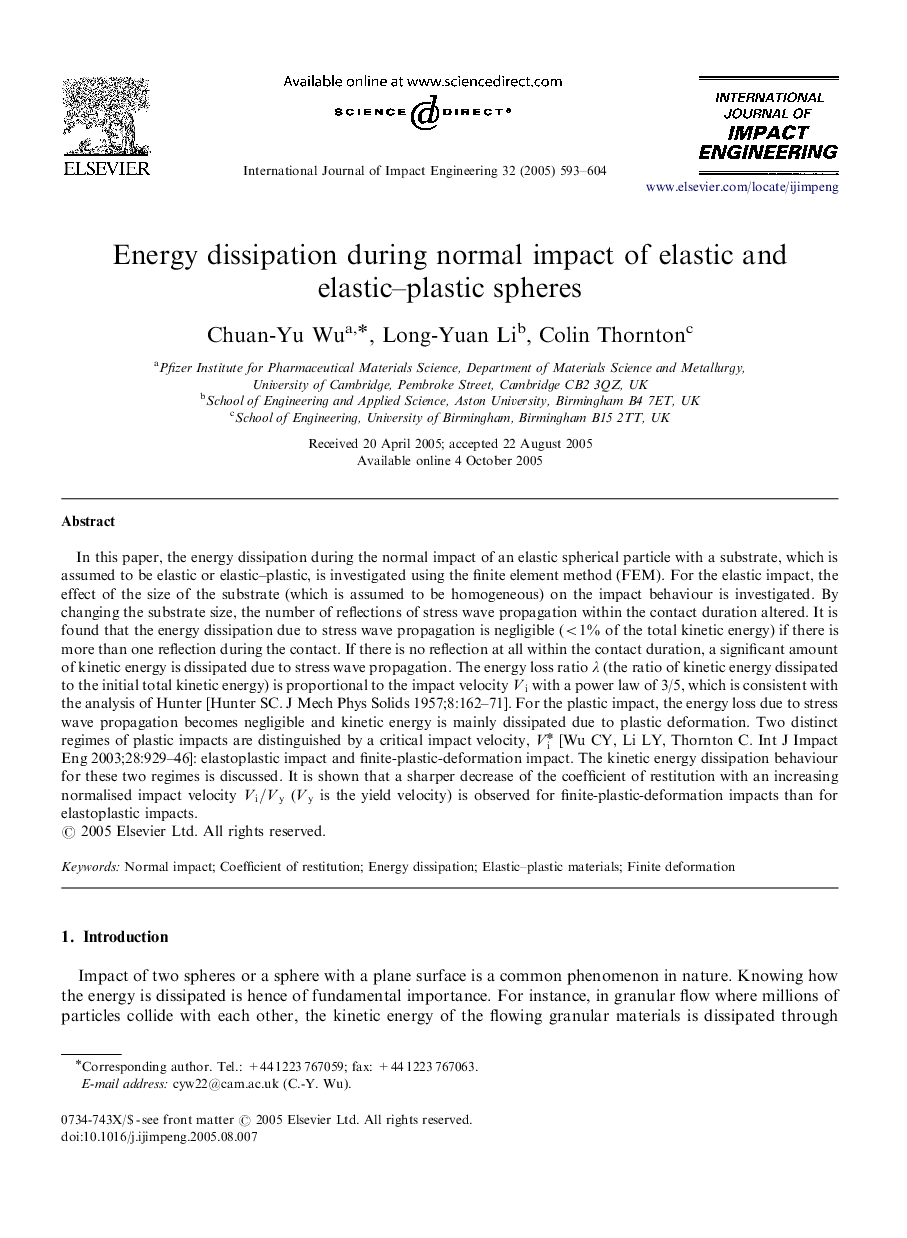| Article ID | Journal | Published Year | Pages | File Type |
|---|---|---|---|---|
| 9704669 | International Journal of Impact Engineering | 2005 | 12 Pages |
Abstract
In this paper, the energy dissipation during the normal impact of an elastic spherical particle with a substrate, which is assumed to be elastic or elastic-plastic, is investigated using the finite element method (FEM). For the elastic impact, the effect of the size of the substrate (which is assumed to be homogeneous) on the impact behaviour is investigated. By changing the substrate size, the number of reflections of stress wave propagation within the contact duration altered. It is found that the energy dissipation due to stress wave propagation is negligible (<1% of the total kinetic energy) if there is more than one reflection during the contact. If there is no reflection at all within the contact duration, a significant amount of kinetic energy is dissipated due to stress wave propagation. The energy loss ratio λ (the ratio of kinetic energy dissipated to the initial total kinetic energy) is proportional to the impact velocity Vi with a power law of 3/5, which is consistent with the analysis of Hunter [Hunter SC. J Mech Phys Solids 1957;8:162-71]. For the plastic impact, the energy loss due to stress wave propagation becomes negligible and kinetic energy is mainly dissipated due to plastic deformation. Two distinct regimes of plastic impacts are distinguished by a critical impact velocity, Vi* [Wu CY, Li LY, Thornton C. Int J Impact Eng 2003;28:929-46]: elastoplastic impact and finite-plastic-deformation impact. The kinetic energy dissipation behaviour for these two regimes is discussed. It is shown that a sharper decrease of the coefficient of restitution with an increasing normalised impact velocity Vi/Vy (Vy is the yield velocity) is observed for finite-plastic-deformation impacts than for elastoplastic impacts.
Keywords
Related Topics
Physical Sciences and Engineering
Engineering
Mechanical Engineering
Authors
Chuan-Yu Wu, Long-Yuan Li, Colin Thornton,
